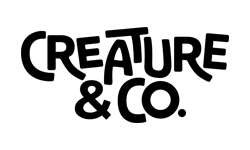It’s not only what we say, but how we say it.
This composition sets out to underscore the significance of employing apposite linguistic technique in achieving a desired outcome when communicating with a specific demographic. Or in other words… This article explains why language matters when writing for a particular age group!
While the opening paragraph answers our question, ‘why language matters’, the dull, complicated, formal response is not going to inspire any audience, least of all a young audience, to read on and take positive action.
Inspiring people to take action is what drives us at Creature & Co.
By creating content that presents facts appropriately and persuasively, we have successfully inspired positive behaviour change on important topics ranging from climate change and plastic pollution to wellbeing and diversity. We know it’s important to use the right language to ensure your brand’s/business’s message resonates with your audience. To do this, we focus on not only what we say, but how we say it.
The fundamentals of effective writing
To communicate successfully we must be clear, specific, concise, accessible, and constructive. Effectiveness comes from clarity which can be crafted using a careful choice of words, tailored to the target audience. This takes many things into consideration: the motivation of the audience, their education and knowledge, the words they are familiar with, and the style that they find most comfortable. These crucial variables are broadly captured within an audience’s age.
Our team are experts at creating content for all age groups, especially kids and teens who need carefully considered messaging and language to communicate sensitive topics. While we are always mindful of the age of our audience, the content we create still follows the same successful structure:
We entertain
Creating fun, engaging experiences that spark interest for the next generation.
We inspire
Providing accessible knowledge about sustainability for families and children
We empower
Equipping the audience with ways they can make a difference themselves.
And to do this effectively, we moderate our language to be age and audience appropriate.
How to tailor language to different audiences
We all adapt our language depending on who we are talking to – especially between adults and children. The trick is to do it without being patronising. For example, we might use the word ‘kids’ to talk to kids about other kids, but we’d probably use ‘children’ or ‘young people’ to talk about kids to adults.
We might be comfortable saying there is an ‘excess’ when talking to adults, and ‘more than we need’ when talking to children, but we’d need a very good reason to use the word ‘plethora’.
We also shouldn’t assume that just because readers are older, that they understand complex or scientific terms like ‘deforestation’ or ‘carbon off-setting’. If there is a simpler way to say something, that is probably the right way to ensure our message reaches our audience clearly.
Another way we cater for age is by using metaphors and examples the audience can easily relate to—perhaps using a comparative school scenario for children versus a work analogy for adults. In the examples we use, we also encourage empathy at an appropriate level, it may be helpful for an adult to appreciate the gruelling horrors and hardships of a refugee fleeing a war zone—but there are some things we don’t want children to try to imagine. This is where our approach to writing for children and adults becomes quite distinctive.
Tackling difficult issues with appropriate language
For us, the real difference of writing for different ages lies in the urgency and frankness of the language we use. We are always honest, and we are always positive, but when writing
for adults we can emphasise the significance of a problem in a way that might upset or even frighten a younger audience. We can stress the seriousness of the situation, highlight the scale of an issue, be more graphic about its impact on people and the environment. To motivate a response we can also suggest the dire consequences of inaction, and consider the human failings that are contributing to the problem.
With adults we can use harder-hitting and more emotive language, being more candid and provocative. However, whatever the age group, we understand the importance of always being positive. Feelings of hopelessness and despair lead to inaction in adults and children, so however dark the subject, we still leave our audience with the optimistic sense that change is still possible.
Tackling difficult issues is important and we shouldn’t shy away from them with adults or children. The age of the audience matters, and while it doesn’t change the essential message, it does change the way it is presented through the use of language.
Our team at Creature & Co. are adept at tailoring language to specific audiences, helping brands and businesses communicate big, real-world topics in a way that informs, inspires, and empowers audiences. We specialise in driving positive, long-lasting behaviour change through language everyone can understand, examples everyone can relate to, and content that everyone can enjoy.
We believe the method we’ve honed to engage children applies to people of all ages—because making challenging topics as simple and digestible as possible, makes them engaging and accessible for all.
You can read more on how to communicate challenging topics positively, in our features on Fun Theory, the Psychology of Content and our webinar on How To Make Sensitive Topics Engaging.

